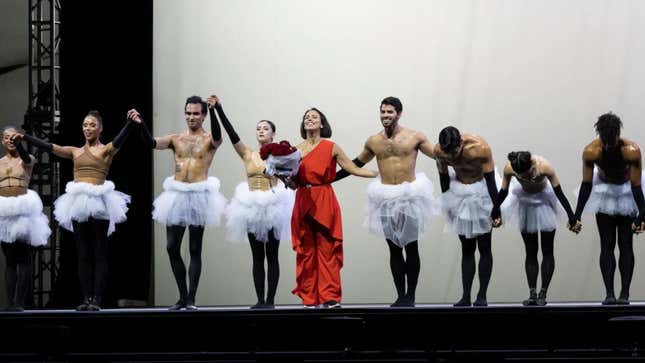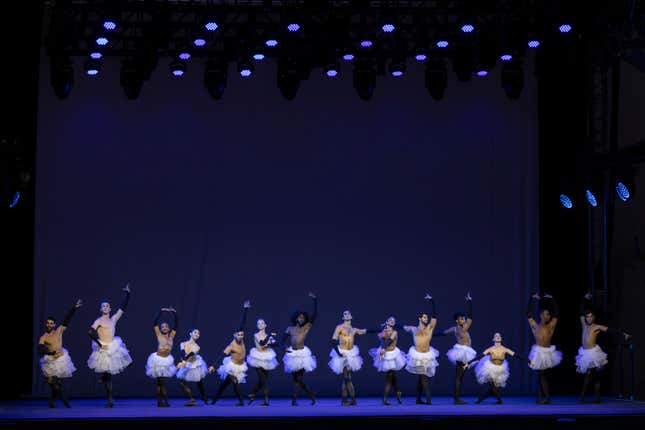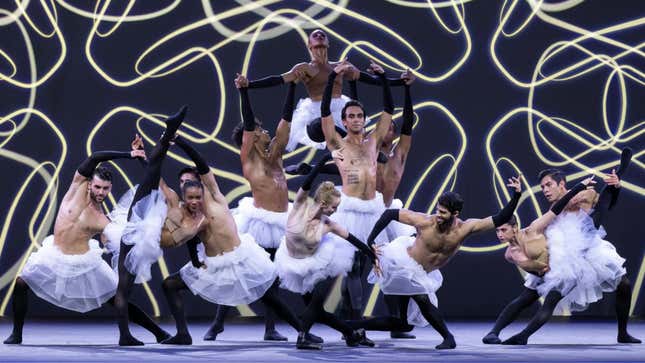Annabelle Lopez Ochoa Is Putting Men in Tutus to Push Ballet lnto the Present
The award-winning choreographer is making "complex" characters, taking on Coco Chanel’s antisemitism, and asking “What if you were the bitch this time?”
In DepthIn Depth

On one of the few nights this summer that it wasn’t too sticky to venture outside, I made my way to Lincoln Center’s outdoor plaza to watch New York City’s second annual BAAND Together Dance Festival. A product of the city’s post-quarantine push to reunite New Yorkers with the financially ravaged arts scene, the show’s sophomore effort featured five of New York’s most prominent dance companies within a single open-air show for 3,000 people. The night I attended, nearly every seat was filled.
I was in the audience to see a new work by Colombian-Belgian choreographer Annabelle Lopez Ochoa titled One for All. Commissioned by the Lincoln Center with support from Chanel, the piece’s premiere on August 9 marked the first time in history that the dance companies (Alvin Ailey American Dance Theatre, American Ballet Theatre, Ballet Hispánico, Dance Theatre of Harlem, and New York City Ballet) participated in a piece together. Sure, they shared the stage last year, but this was different. The melding of companies—of ethnicities, genders, and choreographic styles—is symbolic of a larger movement, away from the idolatry of historically white ballet companies and towards a seamless tapestry of identities.
While this particular piece was more about unity than anything else, Lopez Ochoa’s usual fare assumes a woman’s point of view—something still rare in classical ballet where women are often fairies, princesses, or swans to which horrible things happen until a man comes to fetch her. Rather than co-opting or restaging the same Russian works created long ago by now-dead men, Lopez Ochoa, who has created over 100 works for more than 70 companies around the world, concocts her own stories with a feminist twist.
“I like narrative ballets because I like to put the woman in her complexity—what she has to navigate, how she’s learned to survive this world,” she told Jezebel in a phone interview. “I like to give her agency, but also to give the female dancers who perform those roles more agency, as opposed to always being that princess and always being the victim.” She added, laughing, “What if you were the bitch this time?”
-

-

-

-

-

-

-

-

-

-

-

-

-

-

-

-

-

-

-

-

-

-

-

-

-

-

-

-

-

-

-

-

-

-

-

-

-

-

-

-










































